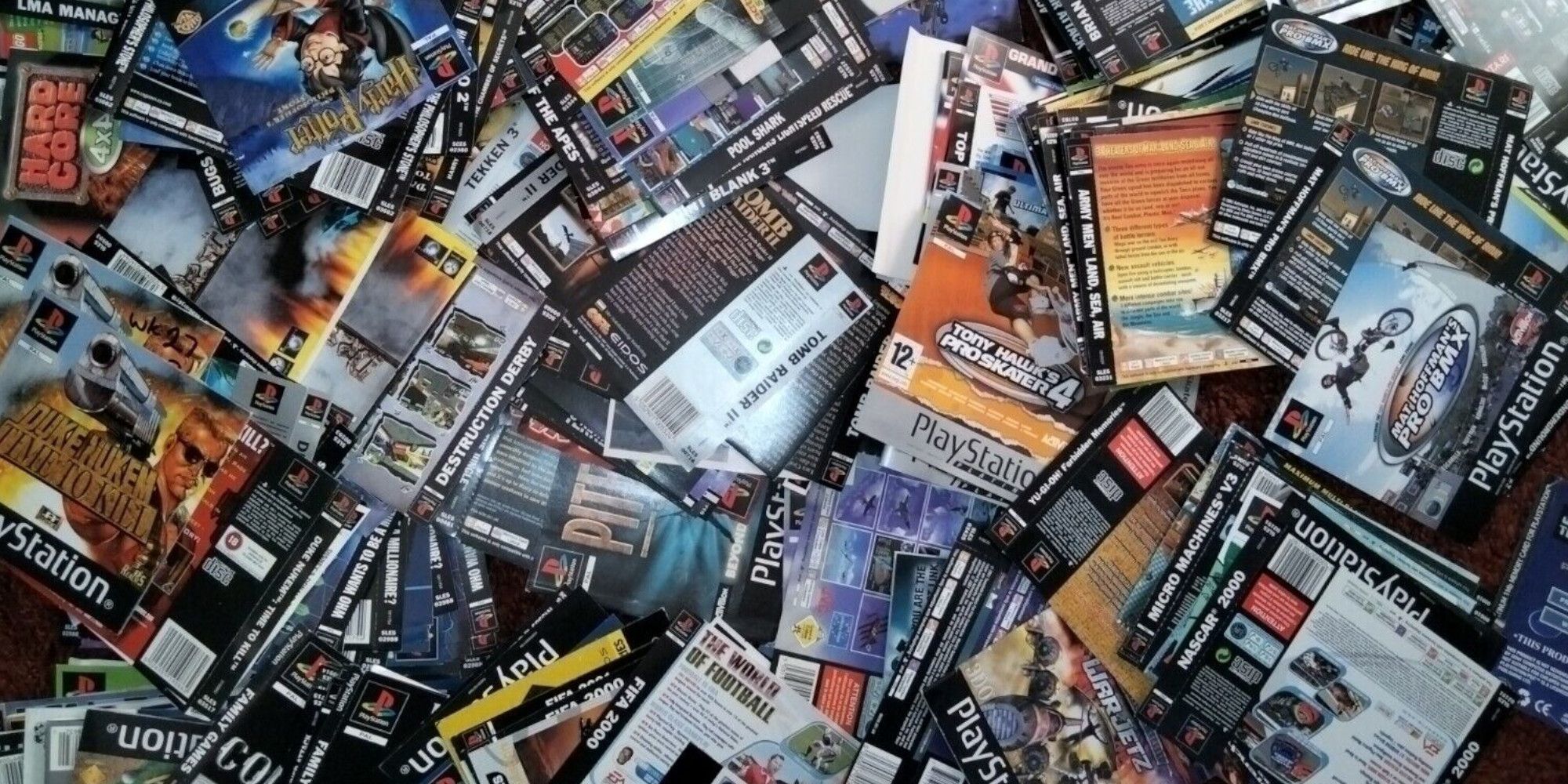“The longer we wait to restore games, the harder it might be to ever bring them back,” says GOG’s senior business development manager, Marcin Paczyński.
If you’ve ever read anything about video game preservation, chances are you’ve found the same alarming problem. Every entertainment industry has issues preserving its history, but video games seem to be one of the worst cases. According to the Video Game History Foundation, you can only access 13 percent of all video games released before 2010.

Related
TIL All Of Our Physical Disc Games Are Rotting
A defect in Warner Bros. DVDs has brought to light a condition called disc rot, and it will get all of our classic games eventually.
There are many reasons behind that low number, including copyright laws, licensing issues, the difficulty of migrating games to other formats, rights holders’ hostility toward emulation, and the scarcity and costs of old hardware. However, perhaps the most relevant issue is how little work many video game companies have done to preserve their own history.
This is where GOG (Good Old Games) comes in. A subsidiary of CD Projekt, the Polish company has been doing its best to restore and preserve our medium’s history since 2008.
The digital distribution platform presents a curated and DRM-free catalogue, which means that all your games are yours to keep, and you don’t need to worry about them becoming delisted, servers going offline, or a lack of support for updates and new system compatibility.
GOG now has over 8,000 video games in its library, from obscure classics that you might have never heard of to recent blockbuster releases. But how did it all start?
Piracy, Pegasus, And Baldur’s Gate
GOG’s history starts long before its official foundation. Back in the ‘90s, Poland had a very different relationship with piracy compared to other countries: people embraced it. It wasn’t only hard to purchase original games due to how expensive they were (a PC game cost one-third of the minimum wage at the time), but it was also hard to find them.
Marcin Paczyński and technical engineer Adam Ziółkowski told me about their childhood playing Pegasus, a bootleg version of the NES that was one of the only consoles affordable for most families. They didn’t know this wasn’t the authentic system made by Nintendo, and it would take years before they could afford their first original game.
“There were floppy parties where people would come with their [Amiga] diskettes,” explains Paczyński. “They would just mass copy everything that everyone had, sharing the pirated software, not buying it.”
Things changed when Baldur’s Gate was released in Poland by CD Projekt. The game was completely translated into Polish, with real local actors from the stage and screen adding their talents to established characters in the classic RPG.
“For me, one of my first original games would be Baldur’s Gate,” says Paczyński. “For a lot of people in Poland, that was actually the first original game that they bought. Its incredible success kind of jumpstarted CD Projekt as a company.”
After a few years of successfully publishing games, CD Projekt garnered mainstream attention in 2007 with the release of The Witcher. In 2008, it created GOG as a means to distribute games for PC and compete with Steam.
Your Favorite Classic, Ready To Play
Almost two decades later, GOG has launched the GOG Preservation Program. It’s a rebranding of what it has been doing from the beginning: maintaining and preserving classic games on modern PCs. According to Paczyński, most people who use GOG don’t know that the classic games are built, maintained, and curated in-house. Paczyński and his team wanted to change this.
For GOG, a classic game is any game that is ten or more years old. So you can think of Fallout 4, Bloodborne, Rocket League, and Batman: Arkham Knight as classics. Sorry about that.
“The idea is for the user to be able to just push the play button, like on consoles, and not to have to bother with any settings,” explains Ziółkowski. “All the default settings should be as optimized as possible. Controller support should be there right from the start.”
Ziółkowski goes on to explain that the program is “a lifetime guarantee”, because if any game gets broken due to an update or they don’t work in the next Windows OS, the tech team will make sure they are fixed. They are also going back through the extensive catalog and making sure that all the titles pass their current quality standards.
The GOG Preservation Program has restored around 150 games, including Silent Hill 4, F.E.A.R. Platinum, Fallout 2, Deus Ex GOTY Edition, Jagged Alliance 2, the first six Ultima entries, and many more. But that isn’t enough for Paczyński. He tells me about the company’s goal to raise the number to 500 by the end of 2025, although he knows this is overly ambitious.
Do Your Part With The Dreamlist
The technical aspect of restoring and maintaining games is only one side of the Preservation Program. GOG also introduced the Dreamlist, a wishlist that lets you vote for the games that you want to see restored. It works as a community-driven tool where you can also add comments about why a specific game is so special to you.
“The Dreamlist is something that really helps us to prioritize certain titles,” explains Paczyński. “There are a lot of games that are right now not available, and there are only four of us in the business department. It’s something that the publishers are also noticing.”
“It really helps with our talks with the publishers and with the rights holders,” adds Ziółkowski. “These testimonies by the fans further motivate them to release those games and to spend the time and effort that is needed to bring those games back.”
But How Does The Restoration Start?
The restoration of an old game usually starts with the Dreamlist. This helps the team prioritize which games to focus on. Then there is a research phase where they have to find out who owns the rights to the game. When that’s finished, the business department reaches the company and tries to settle an agreement.
This can take time, since the larger studios and publishers are usually focusing resources on current or upcoming games, and they might not see the benefits in restoring decades-old games for a low price.
Paczyński also tells me that restoring video games is a constant race against time. The longer GOG waits in working with specific titles, the harder it gets to bring them back.
“There was even a situation in which I was fighting for one game for a couple of years,” explains Paczyński. “I was not able to get it. All the responses that I got weren’t very clear on the reason.
“After a couple of years, I’m in GDC. I’m talking to a guy who was working at that company at the time, and he tells me that there was a huge fire within the company in the storage department. Most of the files from that era are gone.”
On the bright side, Paczyński assures me that his team has found many people in the big companies who care about game preservation, and that they have made efforts and facilitated all the hard work that the initial steps of the process require.
For a specific example of this, you can read our story on how GOG worked with Capcom to restore the original Resident Evil Trilogy.
When an agreement is reached by all the parties involved, it’s time for the technical work to begin. Ziółkowski’s team starts evaluating the title, what they can do with it, and what places could receive enhancements. Their priorities are to make sure that it runs in modern resolutions, enable window mode, and add widescreen and modern controller support, among other quality of life improvements.
Will Video Game Preservation Ever Get Better?
GOG is doing the work that should be done by all the studios in the industry. However, when I ask Paczyński about the future of game preservation, he’s optimistic.
“I think it will get better with what we see and what we have heard from certain partners,” explains Paczyński. There seems to be a much bigger focus on game preservation nowadays. This topic is becoming more and more mainstream.
“With the right incentive from the consumer, those companies will do everything. There’s still a lot to be done, but with the growing interest of the gamers in game preservation, this will only get better.”

Next
The State Of Physical Game Collecting Is Beyond Repair
As a physical game collector, the future seems dire.



















